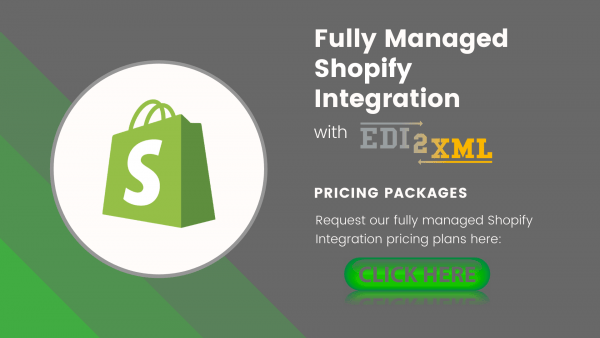This post was updated to reflect current trends and information.
In almost all countries where coronavirus (COVID-19) has spread, isolation, social distance, and lockdown measures were taken. Whenever possible, employees have been asked to work remotely from home, schools have been closed, and people have been asked to avoid public crowded places.
It is not surprising that in this pandemic of coronavirus disease situation more and more people turned to shop online. Thus, the COVID-19 virus can stimulate e-commerce, as consumers avoid visiting places like shops, malls, and shopping centers.
People’s habits are changing very quickly, therefore the category of consumers who never made online purchases previously, are somehow forced to do so, because of the Coronavirus pandemic; consumers will likely continue to do online purchases in the future, considering they live a positive shopping experience online. Hence why companies running online commerce stores must be ready to quickly and efficiently meet the needs of an increasingly growing number of customers and their demands, while the pandemic’s curve does not seem to be likely in the near future…
Read also: Coronavirus Is Changing How Consumers Shop
Increase E-Commerce Efficiency by Connecting online store to ERP Software
ERP is a business management software. It is used to collect, store and manage data of various business processes of an enterprise. Implementation of an ERP system is considered necessary for the effectiveness of the management of any company.
ERP systems, originally implemented only by industrial enterprises, are now adopted by most organizations, regardless of the size of the company, industry, or country. One of the most popular ERP systems is SAP ERP Software, Oracle JDE for large enterprises, and Microsoft Dynamics suite in addition to numerous ERP systems for the mid and small market…
E-commerce stores must be viewed from two sides. The first is the store’s external interface, which allows online visitors to shop online. The second side is the internal business process of your online store. Inventory, orders, and sales management.
Connecting ERP / SAP (for example), to your online store is critical to the successful functioning and development of your online business.

Yes, your online store can work even without integration with your ERP system. However, in this case, a company will have to leverage human resources to manually manage orders, inventory, and sales orders, which is usually a very demanding job, inefficient, often leading to lots of human errors and increasing the delivery window of the orders… This will certainly result in a loss of profit, hence defeating the purpose of the basics of eCommerce.
Key Benefits of Integrating ERP with Shopify e-commerce store
Integration to Shopify or any other e-commerce platform with a company’s ERP prevents inefficient manual data entry between the business system and the online shop. Manual data entry is very time-consuming and involves a high risk of costly errors.
Data transfer errors are one of the most common errors that occur in online stores that are not integrated with the company’s business system. These can be errors with both, the end-users and the suppliers. These errors lead to financial losses; company’s executives should take it seriously and should not ignore those facts.
Integrating the ERP of a company with its online eCommerce store, will certainly eliminate all these errors and provide a close to real-time synchronization between the ERP and Shopify for example, which is necessary to guarantee error-free data transmission between both systems/platforms.
Integration can save companies a lot of time by providing continuous and uninterrupted data transfer between the online store and their business system. This means the purchase order, inventory update, etc. can be automatically updated on both systems, eliminating duplicate data entry.
The integration service that we provide at EDI2XML, is bi-directional between the Shopify online store and a company’s ERP. In other words, information is transferred back and forth between both systems.
Through integration, an order created in the online store is registered in the ERP system without any human intervention. This not only avoids errors but also saves on salary costs.
In the same way, the availability of stock data from the ERP is synchronized with the online store. Thus, online customers have up-to-date information on available products, always.
How to Connect Shopify e-commerce store with SAP ERP Software
Shopify is a popular eCommerce platform that can be integrated with your ERP software using Magic xpi integration platform while leveraging Magic’s SAP-certified connectors.
Magic xpi Integration Platform lets you easily integrate, synchronize and automate processes between ERP systems and e-commerce store and provides a robust integration with any ERP. It is a proven Integration Platform certified for SAP Applications, SAP NetWeaver, and other major enterprise application vendors.

Below are some of the examples of business process integration between Shopify and business systems:
- ERP – eCommerce Catalog data integration
- inventory data pushed to the Shopify store
- ERP to eCommerce pricing updates (bidirectional)
- real-time inventory checks
- real-time credit checks
- order information pushed to ERP
- address book updates (bidirectional)
- shipping confirmations
- delivery notices
- inventory alarms to eCommerce managers
- call center integration
- CRM integration
With near real-time processes, information is updated within seconds. Magic xpi automates the way you deal between ERP and Shopify processes.
Integration Partners That Will Grow Your Business
Any integration project requires technical expertise. We, at EDI2XML offer our customers, Integration services to complex ecosystems such as SAP, ServiceMax, Salesforce, JD Edwards, Oracle ERP, SugarCRM, and more.
For over 21 years, we have been partner with a Global software company Magic Software Enterprises Ltd., which provides the Magic xpi integration platform.
Professionally made synchronization of the e-commerce online store with ERP really helps to make business processes as efficient as possible.
Our company will gladly help you with any Integration project. Contact us to get a free consultation.
RELATED POSTS:
Must-Have Integration between E-Commerce and Business Systems
9 Major E-Commerce Trends That Will Help Grow Your Online Business
The main reasons why you need Microsoft Dynamics Integration with your Business Systems
Shopify and Microsoft Dynamics Nav Integration: Things you should know
















